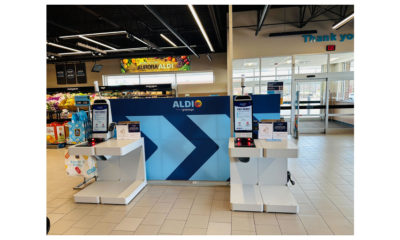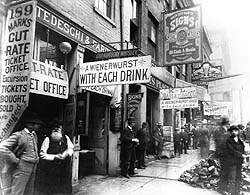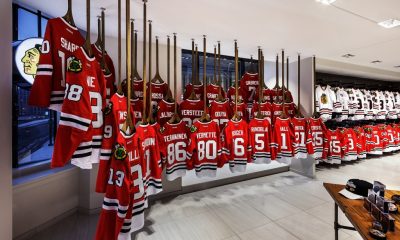Although the National Signs of the Times Museum has yet to settle in (bricks and mortar wise), it has found a comfortable and expanding virtual home at www.signmuseum.com.
The museum was created to celebrate the sign industry, and educate anyone who is interested in learning about the heritage and the important role signs have played in commercial development and America's unique landscape. Like any native-born art, signage gives us a glimpse of the past — that slice of life often referred to as “Americana.”
The museum's mission is to preserve, archive and display a historical collection of signs, while also showcasing the designers, manufacturers, retailers, equipment and technology that made them possible.
Museum curator Tod Swormstedt, a 25-year ST Publications veteran (publishers of Signs of the Times, VM+SD and The Big Picture magazines), says the National Signs of the Times Museum was a natural spin-off for the Cincinnati-based family-owned company. Although it evolved from the pages of Signs of the Times, the museum is a separate, non-profit corporate entity with its own board of directors. Currently, Swormstedt is seeking the same tax-exempt status shared by many cultural centers.
Swormstedt had personal reasons for starting the museum. “It's in my blood,” he says. “I worked on all the magazines, but my heart belongs to Signs, the company's flagship publication…you could say the museum is a way to get back to my roots.”
Advertisement
Although the strategic plan includes the opening of a walk-in site to coincide with Signs of the Times'100th anniversary in 2006, he doesn't see the online resource as a making-do alternative — one that can be abandoned as soon as the museum secures physical digs. For one thing, he says, the site can always be a window to artifacts that will not, or should not travel.
“There are many public historic sign restoration projects underway and/or already completed, which logistically cannot be moved to the museum's physical home,” he says. Signs are bulky, tricky to ship and ideally, better left in their original environments. Also, it's expensive and in some cases impossible to convince private collectors to part with their signs. But the same individuals, Swormstedt says, are more likely to share their treasures with the world if the threat of damage and theft are removed, hence the Internet advantages.
In addition to sign displays, online visitors can continuously see new acquisitions and stay abreast of news and events. The site offers information on sign-related books, and “reprints” relevant articles that are contributed by several sources, even competitors of the magazine.
Retailers and designers will find the museum an excellent reference, Swormstedt says, “as there is a lot of interest in creating period looks.” Apart from design, it's a resource for several kinds of product sourcing, including materials and technique.
Information is presented in a “very informal, human voice,” Swormstedt says. And while signs may be the reason for its existence, the National Signs of the Times Museum doesn't miss an opportunity to explore the human element… “the stories and personalities behind the signs — I think that's as important as anything.”


 Photo Gallery7 days ago
Photo Gallery7 days ago
 Headlines6 days ago
Headlines6 days ago
 Headlines1 week ago
Headlines1 week ago
 Headlines2 weeks ago
Headlines2 weeks ago
 Headlines1 week ago
Headlines1 week ago
 Designer Dozen2 weeks ago
Designer Dozen2 weeks ago
 Designer Dozen5 days ago
Designer Dozen5 days ago
 Headlines6 days ago
Headlines6 days ago

















